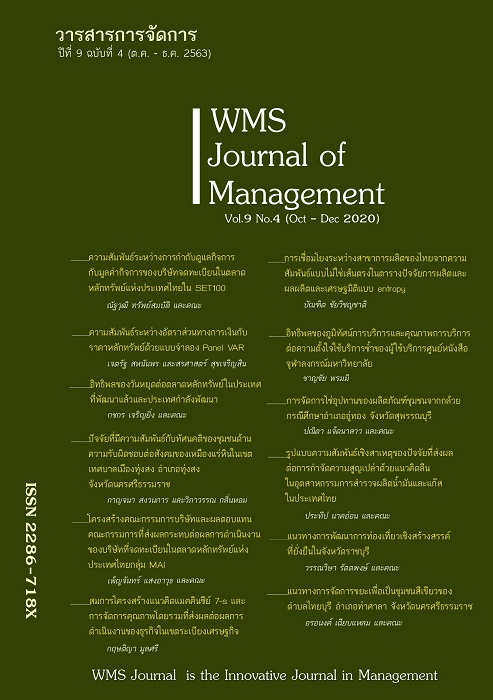Inter-Industry Linkage in Thailand by Nonlinear Relationship in Input-Output Table and Entropy Econometrics
Main Article Content
Abstract
This paper aims to evaluate the inter-industry linkage in Thailand based on the 16 sectors input-output table (1975-2010). By employed the entropy econometric, the nonlinear relationship between input and output for Thai economy were explored. Then, the role of returns to scale of each intermediate goods can be found. The results indicated that the relationships between input and output in Thailand were not in linear form with statistically significance. Both increasing returns to scale and decreasing returns has been found in production process in Thai economy. The conclusion is that most of sectors in Thailand are middle- and down-stream. In order to promote economic expansion, the policy to enhance the linkage among domestic sectors should be focused.
Article Details
References
Chaivichayachat, B. (2018). A Development of Nonlinear Input-Output Model for Thai Economy. Working Paper No.2, Department of Economics: Kasetsart University.
Chander, P. (1983). The Nonlinear Input-Output Model. Journal of Economic Theory, 30, 219-229.
Fernandez-Vazquez, E. (2015). Empirical Estimation of Non-Linear Input-Output Models: An Entropy Econometrics Approach. Economic Systems Research, 27(4), 508-524.
Klijs, J., Peerlings, J., & Heijman, W.J.M. (2015). Usefulness of Non-linear Input-Output Models for Economic Impact Analyses in Tourism and Recreation. Tourism Economics, 21(5), 931-956.
Mohammad-Djafari, A. (2017). A Mathlab Program to Calculate the Maximum Entropy Distribution. Laboratoire des Signaux Systemes: France.
Michaelides, P.G., Belegri-Roboli, A., & Markaki, M. (2012). A Non-linear Leontief-type Input-Output Model. MPRA Paper 74447, University of Munich, Germany.
Rhodes, C. & Morari, M. (1998). Determining the Model Order of Nonlinear Input/Output Systems. AIChE Journal, 44(1), 151-163.
Thanasritunyakul, A. (2014). Backward Linkages in Industry Sector: Measure and Implication for Development Policy. Thammasat Economic Journal, 32(1),1-33.
West, G., & Gamage, A. (2012). Macro Effects of Tourism in Victoria, Australia: A Nonlinear Input-Output Approach. Journal of Travel Research, 12, 101-109.
Xiang, C. (2005). Existence of Global Input-Output Model for Nonlinear Systems. In 2005 International Conference on Control and Automation (125-130). Budapest, Hungary.


